What if these two Fight ? Jaguar vs Snow Leopard ,Two powerful big cats against each other. Before going to the topic I think its better to tell you little about the cat family, There are 41 extant species in this family including domestic cats to the lions and tigers, Basically this cat family divides in to two subfamilies:
01. Pantherinae – which includes the big cats like lions, tigers, and leopards
02. Felinae – which includes smaller cats such as the bobcat, caracal, and ocelot.
Within those subfamilies jaguars and snow leopards belong to the pantherinae. Lets get back in to the topic Jaguar vs Snow Leopard. Jaguars are powerful and muscular, lives in the rainforests of the Americas and jaguars got the strongest bite among big cats relative to its size. Snow leopards are elusive and agile. They lives in the cold mountains of Central and South Asia, blending perfectly with their rugged environment.
This article explores their differences in size, hunting skills, behavior, and more, revealing which cat would win in a face-to-face battle and highlighting their unique specifications. Whether you’re a wildlife fan or curious learner, this concise comparison offers fascinating insights into these incredible predator. So hope you will enjoy!
1. Body Specifications
| Feature | Jaguar | Snow Leopard | Winner |
|---|---|---|---|
| Height (at shoulder) | 68–75 cm | 56–65 cm | Jaguar |
| Body Length | 1.6–1.8 m (excluding tail) | 1.8–2.3 m (including tail) | Snow Leopard |
| Weight | 56–100 kg | 27–55 kg | Jaguar |
| Muscle Mass % | ~55% | ~45% | Jaguar |
| Bone Density | High (ambush predator) | Moderate (climbing adaptation) | Jaguar |
| Claw Length | 4–5 cm (retractable) | 3–4 cm (retractable) | Jaguar |
| Skull Strength | Extremely robust | Moderate | Jaguar |
| Tail Length | 45–75 cm (balance) | 80–100 cm (balance) | Snow Leopard |
| Limb Structure | Stocky, powerful forelimbs | Lean, agile hind legs | Tie |
| Body Shape | Compact, muscular | Streamlined, elongated | Tie |
2. Coat and Coloration
| Feature | Jaguar | Snow Leopard | Winner |
|---|---|---|---|
| Base Color | Golden-yellow with rosettes | Pale gray with rosettes | Tie |
| Pattern Function | Forest camouflage | Alpine rock mimicry | Tie |
| Rosette Shape | Large with central spots | Smaller, no central spots | Jaguar |
| Melanin Levels | High (dense pigmentation) | Low (alpine adaptation) | Jaguar |
| Fur Thickness | 1–2 cm (tropical) | 5–7 cm (winter) | Snow Leopard |
| Belly Coloration | White with spots | White with faint spots | Jaguar |
| Cub Markings | Bold rosettes | Dense, fuzzy spots | Tie |
| Seasonal Variation | None | Winter whitening | Snow Leopard |
| Scent Glands | Strong (territory marking) | Moderate | Jaguar |
| Whisker Density | High | Moderate | Jaguar |
3. Habitat – Jaguar Vs Snow Leopard
| Feature | Jaguar | Snow Leopard | Winner |
|---|---|---|---|
| Geographic Range | Central & South America | Central & South Asia | Tie |
| Elevation Range | 0–3,000 m | 3,000–4,500 m | Snow Leopard |
| Habitat Type | Rainforest, wetlands, dry forest | Alpine meadows, rocky slopes | Tie |
| Climate Preference | Tropical, subtropical | Cold, arid, alpine | Tie |
| Territorial Range | 25–100 km² | 100–1,000 km² | Snow Leopard |
| Denning Behavior | Dense vegetation, caves | Rock crevices, caves | Tie |
| Human Proximity | Avoids, but near settlements | Avoids, remote mountains | Snow Leopard |
| Migratory Patterns | Non-migratory | Seasonal altitude shifts | Snow Leopard |
| IUCN Habitat Status | Fragmented, declining | Fragmented, declining | Tie |
| Climate Change Impact | High (deforestation, flooding) | High (glacial retreat, warming) | Tie |
Winner – Snow Leopard – Greater elevation range and larger territory.
4. Diet And Hunting
| Feature | Jaguar | Snow Leopard | Winner |
|---|---|---|---|
| Diet Type | Obligate carnivore | Carnivore (ungulates) | Tie |
| Primary Prey | Capybara, deer, peccary, caiman | Blue sheep, ibex, marmots | Tie |
| Hunting Success Rate | 50–60% | 20–25% | Jaguar |
| Daily Caloric Need | 2–3 kg meat | 1.5–2.5 kg meat | Jaguar |
| Hunting Technique | Ambush, skull bite (crushing) | Ambush from cliffs, throat bite | Jaguar |
| Prey Size Handling | Up to 2x body weight | Up to 3x body weight | Snow Leopard |
| Scavenging Behavior | Occasional | Rare | Jaguar |
| Water Dependency | High (swims, drinks often) | Low (gets water from prey) | Snow Leopard |
| Food Storage | None | Caches in snow | Snow Leopard |
| Tool Use | None | None | Tie |
Winner – Jaguar – Higher hunting success rate and more powerful killing technique.
5. Strength and Bite Force
| Feature | Jaguar | Snow Leopard | Winner |
|---|---|---|---|
| Bite Force (PSI) | 1,500–2,000 PSI | 400–450 PSI | Jaguar |
| Claw Strength | Very strong, retractable | Moderate, retractable | Jaguar |
| Lifting Capacity | Up to 2x body weight | Up to 3x body weight | Snow Leopard |
| Jaw Opening Angle | ~70° | ~65° | Jaguar |
| Forelimb Strength | Exceptional (crushing, dragging) | Powerful (leaping) | Jaguar |
| Grip Strength | Extreme | High | Jaguar |
| Canine Length | 4–5 cm | 2.5–3 cm | Jaguar |
| Skull Robustness | Extremely robust | Moderate | Jaguar |
| Neck Muscle Mass | High | High | Tie |
| Defensive Power | High | Moderate | Jaguar |
6. Speed and Agility – Jaguar Vs Snow Leopard
| Feature | Jaguar | Snow Leopard | Winner |
|---|---|---|---|
| Top Speed | 50–65 km/h (short bursts) | 56–64 km/h (short bursts) | Tie |
| Acceleration | Fast (ambush) | Very fast (ambush) | Tie |
| Agility in Trees | High (climbs, swims) | Moderate | Jaguar |
| Agility on Rocks | Moderate | Exceptional | Snow Leopard |
| Jumping Distance | Up to 6 m (horizontal) | Up to 15 m (horizontal) | Snow Leopard |
| Swimming Ability | Excellent | Poor | Jaguar |
| Stamina | Moderate | Moderate | Tie |
| Turning Radius | Tight (dense forest) | Tight (mountain terrain) | Tie |
| Endurance | Moderate | Moderate | Tie |
| Climbing Speed | High | Moderate | Jaguar |
7. Senses – Jaguar Vs Snow Leopard
| Feature | Jaguar (Panthera onca) | Snow Leopard (Panthera uncia) | Winner |
|---|---|---|---|
| Vision Acuity | Excellent night vision; adapted for low light conditions | Extraordinary low-light vision; hunts in near total darkness | Tie |
| Hearing Range | Acute hearing; detects prey and rivals | Highly sensitive hearing; communicates via chuffing and yowls | Tie |
| Olfactory Capability | Strong sense of smell for tracking prey and marking territory | Exceptional olfactory sense; uses scent marking extensively | Tie |
| Night Vision | Excellent; nocturnal hunter | Excellent; crepuscular and nocturnal | Tie |
| Color Vision | Dichromatic; limited color perception | Dichromatic; similar to other big cats | Tie |
| Whisker Sensitivity | Highly sensitive for detecting prey in dense vegetation | Highly sensitive; aids in navigation in rocky terrain | Tie |
| Auditory Localization | Precise localization of sounds | Precise localization; uses vocalizations for communication | Tie |
| Scent Marking | Strong territorial marking with urine and scratches | Extensive marking with urine, scrapes, and gland secretions | Snow Leopard |
| Vocalizations | Roars, growls, chuffs, and hisses | Cannot roar; produces chuffing, growls, hisses, and yowls | Jaguar |
| Communication Modes | Visual, auditory, olfactory | Visual, auditory, olfactory, tactile (head rubbing) | Tie |
Winner: Tie – Both have highly developed senses adapted to their environments; snow leopard uses more scent marking, jaguar has roaring ability.
8. Reproduction and Lifespan
| Feature | Jaguar (Panthera onca) | Snow Leopard (Panthera uncia) | Winner |
|---|---|---|---|
| Gestation Period | 93–105 days | 90–105 days | Tie |
| Litter Size | 1–4 cubs | 2–3 cubs | Tie |
| Cub Mortality Rate | High in wild (up to 50%) | High in wild (40–60%) | Tie |
| Sexual Maturity Age | 2–3 years | 2–3 years | Tie |
| Lifespan (Wild) | 12–15 years | 10–12 years | Jaguar |
| Lifespan (Captivity) | Up to 20–22 years | Up to 21 years | Tie |
| Parental Care | Maternal care for up to 2 years | Maternal care for ~18–22 months | Jaguar |
| Breeding Frequency | Every 2 years | Every 2 years | Tie |
| Mating Season | Year-round, peaks vary by region | January to March | Tie |
| Weaning Age | 6–12 months | 5–6 months | Jaguar |
Winner: Jaguar – Slight edge due to longer lifespan and extended parental care.
9. Social Behavior – Jaguar Vs Snow Leopard
| Feature | Jaguar (Panthera onca) | Snow Leopard (Panthera uncia) | Winner |
|---|---|---|---|
| Social Structure | Solitary; except mothers with cubs | Solitary; except mothers with cubs | Tie |
| Territorial Range | Males 25–100 km²; females smaller | 100–1,000 km² depending on prey density | Snow Leopard |
| Territorial Marking | Strong marking with urine, scratches, vocalizations | Extensive marking with urine, scrapes, scent glands | Snow Leopard |
| Aggression Level | High; defends territory fiercely | Moderate; avoids direct conflicts | Jaguar |
| Communication | Roars, growls, scent marking | Chuffing, yowls, scent marking, facial expressions | Tie |
| Parental Care | Maternal, protective | Maternal, protective | Tie |
| Play Behavior | Cubs play extensively | Cubs play extensively | Tie |
| Intraspecies Conflict | Territorial fights common | Rare; males intolerant of other males | Jaguar |
| Human Interaction | Generally avoids humans but can be bold | Avoids humans, shy and elusive | Snow Leopard |
| Group Hunting | None | None | Tie |
Winner: Tie – Both are solitary and territorial; jaguar more aggressive, snow leopard more elusive.
10. Conservation Status
| Feature | Jaguar (Panthera onca) | Snow Leopard (Panthera uncia) | Winner |
|---|---|---|---|
| IUCN Status | Near Threatened | Vulnerable | Jaguar |
| Estimated Population | 15,000–20,000 individuals | 4,000–6,500 individuals | Jaguar |
| Population Trend | Decreasing | Decreasing | Tie |
| Main Threats | Habitat loss, poaching, human-wildlife conflict | Poaching, habitat fragmentation, retaliatory killings | Tie |
| Conservation Efforts | Protected areas, anti-poaching, community programs | Protected areas, global snow leopard forums, anti-poaching | Tie |
| Legal Protection | CITES Appendix I | CITES Appendix I | Tie |
| Captive Breeding | Moderate success | Limited success | Jaguar |
| Habitat Protection | National parks, reserves | National parks, reserves | Tie |
| Community Involvement | High (Latin America) | Moderate (Asia) | Jaguar |
| International Focus | High; flagship species | High; flagship species | Tie |
Winner: Jaguar – Larger population, broader conservation programs, and slightly better captive breeding success.
Interesting Facts
Jaguar (Panthera onca)
-
Jaguars are the largest big cats in the Americas.
-
They have the strongest bite force relative to size among big cats.
-
Their bite can pierce turtle shells and skulls of prey.
-
Jaguars’ coats have large rosettes with central spots.
-
Melanistic (black) jaguars are common in dense forests.
-
They are excellent swimmers and often hunt in water.
-
Jaguars use a unique killing method: biting through the skull.
-
Their range once extended to the southwestern USA.
-
Jaguars are solitary and territorial animals.
-
They play a key role in maintaining ecosystem balance.
Snow Leopard (Panthera uncia)
-
Snow leopards live at elevations between 3,000 and 4,500 meters.
-
Their thick, smoky-gray fur camouflages them on rocky slopes.
-
They have long, thick tails for balance and warmth.
-
Snow leopards cannot roar but communicate with chuffing sounds.
-
Their wide paws act like natural snowshoes.
-
They can leap horizontally up to 15 meters.
-
Snow leopards are solitary and elusive predators.
-
They primarily hunt blue sheep and ibex.
-
Their fur changes thickness seasonally for insulation.
-
Snow leopards are adapted to cold, arid mountainous habitats.
Final Winner of the Face-to-Face Battle: Jaguar vs Snow Leopard
Winner: Jaguar
Why Jaguar Wins:
-
Superior Size and Strength: Jaguars typically weight between 56–100 kg, almost double the average snow leopard’s 27–55 kg, giving them a significant physical advantage.
-
Incredible Bite Force: Jaguars possess the strongest bite force among big cats relative to their size (up to 2,000 PSI), capable of crushing skulls and turtle shells. This bite would be deadly in a fight.
-
Robust Build: Jaguars have a compact, muscular body built for power and ambush, enabling them to overpower prey and rivals alike.
-
Aggressive Fighting Style: Jaguars are known for their boldness and territorial aggression, often engaging in fierce fights with rivals and other large predators.
-
Versatile Hunting Skills: Their ability to swim, climb, and stalk prey in dense forests gives them a tactical edge in various terrains.
Why Snow Leopard Loses:
-
Smaller Size and Weight: Snow leopards are lighter and more slender, adapted for agility and stealth rather than brute force.
-
Weaker Bite Force: While powerful, their bite force (around 400–450 PSI) is significantly less than that of the jaguar.
-
Specialized for Mountain Terrain: Snow leopards excel in rugged, high-altitude environments but are less adapted for direct combat with larger, stronger predators.
-
Avoidance Behavior: Snow leopards tend to avoid confrontations and rely on stealth and escape rather than fighting.
Anyway who is your favorite? Don’t forget to Leave a comment!
References
-
Four Paws. Jaguar versus leopard: The key differences.
-
BBC Earth News. Tigers evolved with snow leopards, gene study reveals.
-
HowStuffWorks. Jaguar vs. Leopard: Spotting the Similarities and Differences.
-
Treehugger. What’s the Difference Between Jaguars and Leopards?
-
PMC, National Center for Biotechnology Information. Genome report: chromosome-level draft assemblies of the snow leopard and related species.
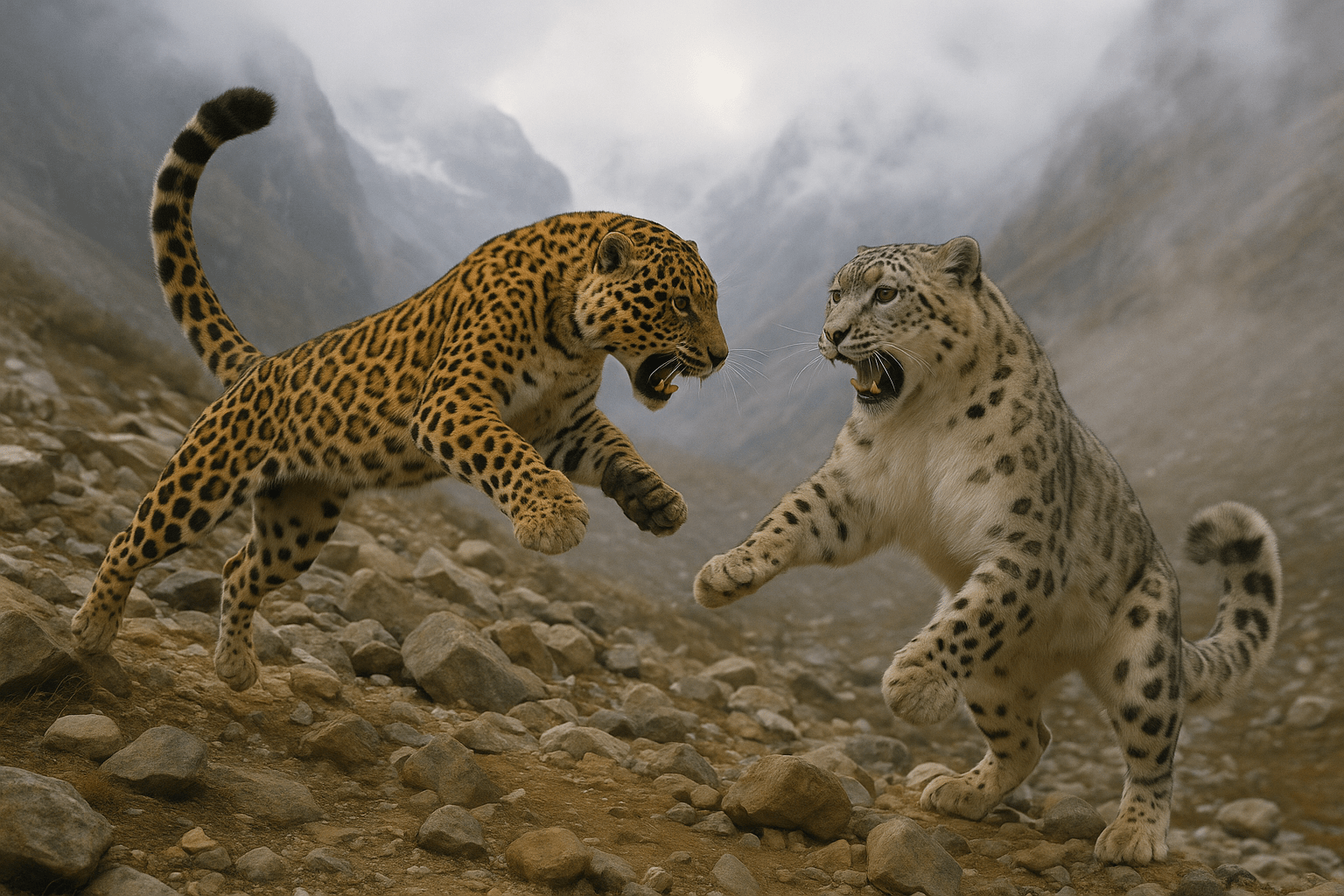
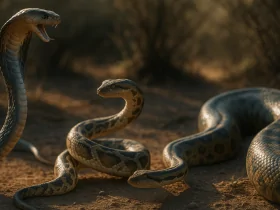
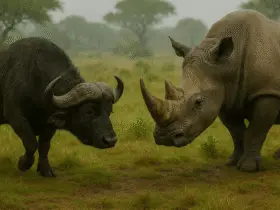
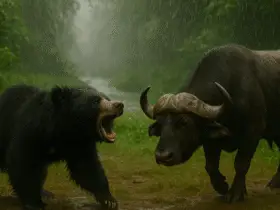
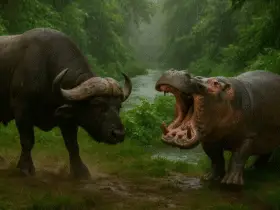
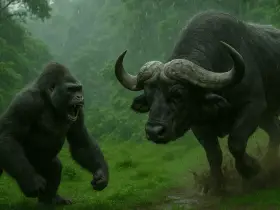
Leave a Reply